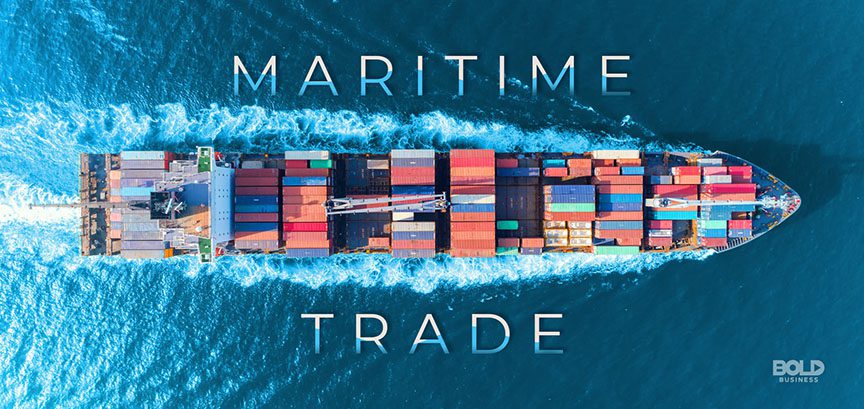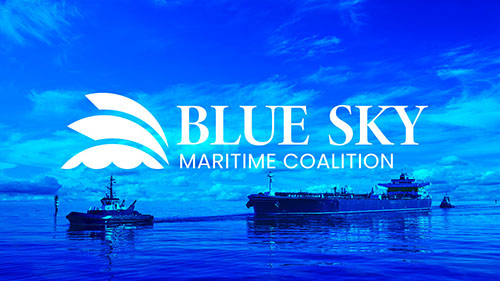1. Port and Terminal Information
1.1 Xiamen Port operates 24/7, including holidays, but specific terminals may have restricted hours for certain operations (e.g., hazardous cargo handling). Confirm with the Port Control (+86-592-6895114) or terminal operator in advance.
1.2 Key terminals:
– Haicang Container Terminal: Max draft 17.5m, 4 berths (No. 1-4) capable of handling 20,000+ TEU vessels, equipped with 22 quay cranes (max outreach 70m).
– Dongdu International Cruise Terminal: Dedicated cruise berth (320m LOA, 11m draft), with passenger gangways for vessels up to 5,000 pax.
– Gulangyu Passenger Terminal: For ferries and small passenger vessels (max LOA 150m), operating 0600-2200 daily.
– Songyu Coal Terminal: Max draft 15.8m, equipped with conveyor systems (capacity: 8,000 MT/hr), dust suppression systems mandatory.
– Xiangyu Bonded Oil Terminal: For oil products (max draft 16.2m), ISGOTT compliance required.
1.3 Mandatory use of low-sulfur fuel (≤0.5% sulfur content) within Xiamen Port waters, in compliance with China’s Domestic Emission Control Area (DECA) regulations (MEPC.280(70)).
1.4 Port entry restrictions:
– Vessels with air draft exceeding 50m must obtain prior approval from Xiamen MSA due to bridge clearance limitations.
– Vessels carrying ultra-heavy lifts (>500T) require 14-day advance notice.
1.5 Terminal-specific requirements:
– Container terminals require pre-stowage plans in Bayplan format 48h prior arrival.
– Bulk carriers must provide cargo trimming certificate for materials with angle of repose <35°.
– Ro-Ro vessels must submit vehicle stowage plan with center of gravity calculations.
2. Navigation and Anchorage
2.1 Main channel depth maintained at -16.5m (datum), with tidal range up to 6.4m during spring tides. Under-keel clearance must exceed 10% of draft at all times.
2.2 Anchorage Areas:
– No.1 Anchorage (24°26’N/118°04’E): For vessels >200m LOA, soft mud bottom, holding power 3:1 in normal conditions.
– No.2 Anchorage (24°24’N/118°06’E): For vessels <200m LOA, max stay 72h, prohibited during typhoon signals.
– Emergency Anchorage (24°22’N/118°08’E): Kept clear unless authorized by Xiamen VTS, marked by yellow buoys.
– Quarantine Anchorage (24°25’N/118°05’E): For vessels requiring health inspections, 0.5nm radius.
2.3 Mandatory AIS transmission within 20nm of Xiamen port limits. Vessels must monitor VHF Ch.16/08 continuously.
2.4 Speed limits:
– Inner harbor: ≤8 knots (15km/h)
– Approach channels: ≤12 knots (22km/h)
– Within 0.5nm of terminals: ≤5 knots (9km/h)
2.5 Prohibited navigation zones:
– Within 500m of undersea cable areas (marked on charts with magenta lines)
– 1nm radius around LNG terminal at 24°31’N/118°07’E (marked by red flashing lights)
– 0.3nm exclusion zone around submarine exercise areas (NOTAM issued when active)
2.6 Radar coverage: X-band radar stations provide 24/7 coverage up to 24nm, with blind spots reported at:
– 24°28’N/118°02’E (behind Gulangyu Island)
– 24°23’N/118°12’E (near Jiuxian Shoal)
3. Pilotage and Towage
3.1 Compulsory pilotage for:
– All foreign vessels
– Domestic vessels >500 GT
– Any vessel carrying Class 1 dangerous goods
Request must be submitted 24h prior via Xiamen VTS (vts@xiamenport.com.cn) using Form MSA-105.
3.2 Pilot boarding positions:
– Primary: 24°23.5’N/118°09.2’E (approx. 3nm SE of Gulangyu Island)
– Alternative: 24°25’N/118°11’E during NE monsoon (Nov-Mar)
– Night boarding requires deck lighting of at least 100 lux at boarding area
3.3 Tug assistance is mandatory for:
– Vessels >200m LOA (minimum 2 tugs)
– All tankers carrying Grade A hazardous cargo (minimum 1 tug standby during ops)
– During Beaufort Scale 6+ winds (tug power ≥40 tons bollard pull)
– Vessels with single screw propulsion >150m LOA
– VLCCs at all times (minimum 3 tugs)
3.4 Pilot ladder requirements:
– Strict compliance with SOLAS Reg. V/23
– Must extend ≥1.5m above platform with proper spreaders
– Maximum inclination 45° from horizontal
– Combined pilot ladder/hoist arrangements prohibited
3.5 Pilot transfer windows:
– Daytime only for vessels >300m LOA in winds >15 knots
– Prohibited when wave height exceeds 2.5m at boarding area
4. Cargo Operations
4.1 Dangerous Goods:
– IMDG Code Class 1 explosives require 72h pre-notification via DGForm-XM
– Class 2.1 gases: stowage restrictions within 500m of residential areas
– Class 7 radioactive materials: special quarantine clearance required
– Class 3 liquids: secondary containment mandatory for shore tanks
– DG manifests must follow China MSA Format D-12
4.2 Grain cargoes:
– Official moisture content certificate required (≤14% wheat, ≤13% rice)
– Fumigation operations require 24h notice to Port Health
– Grain temperature monitoring every 4 hours during loading
4.3 Container operations:
– VGM declaration must be submitted 24h before loading per SOLAS Ch.VI/2
– Overheight containers (>8’6″) require special stowage approval
– Refrigerated containers: pre-cooling certificate required 12h before loading
4.4 Bulk cargo requirements:
– Iron ore/nickel ore: independent survey for TML ≤10%
– Coal: spontaneous combustion monitoring every 2 hours
– Cement: humidity-controlled storage mandatory
4.5 Special cargoes:
– Project cargo: heavy lift plan approved by class society
– Steel coils: certification for securing arrangements
– Logs: anti-pest treatment certificate required
4.6 Cargo gear:
– Ship’s gear certificates must be valid and displayed
– Shore cranes: annual load test certificates available for inspection
5. Safety and Emergency
5.1 Typhoon precautions:
– Signal No.8: all cargo ops cease, gangways retracted
– Mandatory evacuation when sustained winds exceed 28m/s
– Designated typhoon moorings assigned by VTS
5.2 Oil spill response:
– Immediate reporting for bunker leakage >1 ton
– Contact Xiamen MSA (+86-592-6895119) and deploy SOPEP
– Minimum fine ¥200,000 for non-reporting
– Spill response equipment stationed at:
• Haicang: 24°29’N/118°03’E
• Dongdu: 24°27’N/118°05’E
5.3 Prohibited areas:
– Military zones near Dadeng Island (24°33’N/118°23’E) – 3nm clearance
– 500m exclusion zone around naval base at 24°29’N/118°04’E
– Underwater pipeline corridors (marked on charts)
5.4 Fire safety:
– Hot work permits require MSA inspection
– Spark arrestors mandatory for vessel funnels
– Fire patrols every 30 minutes during hazardous cargo ops
5.5 Emergency contacts:
– VTS Emergency: VHF Ch.16/08
– Port Police: +86-592-6895110
– Medical Emergency: 120 (English-speaking operators available)
5.6 Search and Rescue:
– SAR coordination center at 24°26’N/118°07’E
– Helicopter landing zones marked at all major terminals
6. Environmental Regulations
6.1 Zero discharge policy:
– Sewage, garbage, bilge water prohibited within 12nm
– Reception facilities available at all terminals (fees apply)
6.2 Ballast water management:
– Exchange >50nm from land in >200m depth
– D-2 standard required for vessels built after 2017
– Ballast log inspections conducted randomly
6.3 Air emissions:
– Shore power connection mandatory where available
– Visible smoke ≤20% opacity (GB 3847-2018)
– VOC recovery systems required for tankers
6.4 Noise control:
– Night operations (2200-0600) limited to 65dB at terminal boundaries
– Ship’s whistles prohibited within inner harbor
6.5 Wildlife protection:
– Speed reduction zones for Chinese white dolphins (24°22′-24°28’N)
– No anchoring in coral areas (marked by green buoys)
7. Crew Requirements
7.1 Shore leave:
– Permitted with valid passport and crew ID
– COVID-19 restrictions may apply (check current notices)
7.2 Medical facilities:
– Xiamen Port Hospital: 97 Haicang Blvd (decompression chamber available)
– Designated infectious disease unit at Xiamen First Hospital
7.3 Crew changes:
– 48h notice to Immigration Office
– Required documents: crew list, passports, guarantee letter
– Health declarations mandatory
7.4 Training requirements:
– Safety officers: valid ISPS certification
– Oil tanker personnel: COF certificates
– Emergency drills logged per SOLAS requirements
7.5 Crew welfare:
– Seafarer centers at Haicang and Dongdu terminals
– Free WiFi available at all major terminals
8. Legal and Administrative
8.1 Port dues:
– Settled within 7 days of departure
– Late fees: 0.05% per day of invoice amount
8.2 Customs clearance:
– Ship’s stores declaration 6h before arrival
– Arms/ammunition must be sealed
8.3 Port State Control:
– 25% inspection rate for vessels >10 years old
– Priority inspection criteria:
• Last detention in China
• Overdue surveys
• Poor safety record
8.4 Documentation:
– Original certificates must be available
– Electronic certificates accepted if verifiable through IHMU
8.5 Insurance requirements:
– P&I coverage proof required
– Local pollution insurance for tankers
9. Special Notices
9.1 Annual fishing moratorium (May 1-Aug 16):
– Increased small boat traffic
– Night navigation requires additional lookouts
9.2 Underwater operations:
– MSA approval required 72h in advance
– Diver down flags must be displayed
9.3 VHF silence periods:
– 0800-0830 and 2000-2030 daily for weather broadcasts
9.4 New regulations:
– Electronic Bills of Lading mandatory from 2024
– Real-time bunker sampling for vessels >5,000 GT
9.5 Cultural considerations:
– No fireworks during traditional festivals
– Respect local customs in port areas
10. Additional Operational Notes
11.1 Bunkering operations:
– Advance notice 24h required
– Dedicated bunker zones at Haicang and Dongdu
– MARPOL sampling required
11.2 Fresh water supply:
– Available at all berths (50T/hr capacity)
– Chlorination certificates provided
11.3 Waste disposal:
– Segregated facilities for:
• Oily waste
• Food waste
• Recyclables
11.4 Port services:
– Chandlery available 24/7 with prior notice
– Cashless payments preferred at terminals
11.5 Communication protocols:
– English mandatory for VHF communications
– Phonetic alphabet required for spelling





